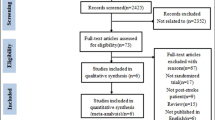Abstract
A 55-year-old male subject was treated with a two-tiered neurotherapy approach for a period of six months beginning approximately one year after a left-side CVA. Medical evaluation revealed left posterior temporal/parietal infarctions secondary to occlusion of the left internal carotid artery. The patient complained of hesitant speech with word finding difficulty and paraphasia, difficulty focusing his right eye, lack of balance and coordination, poor short-term memory, poor concentration, anxiety, depression, and tinnitus. A quantitative electroencephalograph (QEEG) analysis revealed increased left-side 4–7-Hz activity and alpha persistence on eye opening. Two neurotherapy approaches were used beginning with electroencephalographic entrainment feedback (EEF). This was followed by neurofeedback to inhibit 4–7 Hz and increase 15–21 Hz over sensorimotor and speech areas. At the conclusion of treatment there were significant reductions in slow-wave activity. Improvement was evident in speech fluency, word finding, balance and coordination, attention, and concentration. Depression, anxiety, and tinnitus were greatly reduced.
Similar content being viewed by others
References
Ayers, M. E. (1981). A report on a study of the utilization of electroencephalography (neuroanalyzer) for the treatment of cerebral vascular lesion syndromes. In L.P. Taylor, M.E. Ayers, & G. Tom, (Eds.)Electromyometric biofeedback therapy (pp. 244–277). Los Angeles: Biofeedback and Advanced Therapy Institute.
Ayers, M. E. (1987). Electroencephalic neurofeedback and closed head injury of 250 individuals. In National Head Injury Syllabus,Head injury frontiers, p. 380. Washington, DC: National Head Injury Foundation.
Connors, K. (1989).Connor's rating scales. Toronto, Ontario: Multi-Health Systems.
Dawson, R. E., Webster, J. W., & Gurdjian, E. S. (1951). Serial electroencephalography in acute head injuries.Journal of Neurosurgery, 8, 613–624.
Derogatis, L. R. (1993).Brief Symptom Inventory Manual. Minneapolis: NCS (National Computer Systems).
Emerik, L. L., & Haynes, W. O. (1986).Diagnosis and evaluation in speech pathology (3rd ed. Englewood Cliffs, NJ: Prentice-Hall.
Glickson, J. (1986–1987). Photic driving and altered states of consciousness: An exploratory study.Imagination, Cognition and Personality, 612 167–182.
Golden, C. J. (1978)Diagnosis and rehabilitation in clinical neuropsychology. Springfield, IL: Charles C. Thomas.
Goodglass, H., & Kaplan, E. (1987).Boston disgnostic aphasia examination. (2nd ed. Philadelphia, PA: Lea & Febiger.
Inouye, T., Sumitsuji, N., & Matsumo, K. (1980). EEG changes induced by light stimuli modulated with the subject's alpha rhythm.EEG & Clinical Neurophysiology, 49, 135–142.
Isley, M. R., Krauss, G. L., Levin, K. H., Litt, B., Shields, R.W., & Wilbourn, A. J. (1993).Electromyography/electroencephalography, Redmond, WA: SpaceLabs Medical Inc.
LeCraw, D. E. (1989). Biofeedback in stroke rehabilitation. In J.V. Basmajian (Ed.),Biofeedback: Principles and practices for clinicians (pp. 105–117). Baltimore: Williams & Wilkins.
Lubar, J. F. (1989). Electroencephalographic biofeedback and neurologic applications. In J. V. Basmajian (Ed.),Biofeedback: Principles and practices for clinicians, Baltimore: Williams & Wilkins.
Lubar, J. F., & Deering, W. M. (1981).Behavioral approaches to neurology, New York: Academic Press.
Lubar, J. O., & Lubar, J. F. (1984). Electroencephalographic biofeedback of SMR and beta for treatment of Attention Deficit Disorders in a clinical Setting.Biofeedback and Self Regulation, 9, 1–23.
Ochs, L. (1992).EEF: Electroencephalographic entrainment feedback. Unpublished manuscript.
Ochs, L. (1993).Electroencephalographic entrainment feedback (EEF). Unpublished manuscript.
Oster, G (1973). Auditory beats in the brain.Scientific American, 229, 94–102.
Othmer, S. (1993, March).EEG biofeedback training for hyperactivity, Attention Deficit Disorder, specific learning disabilities, and other disorders. Paper presented at Association for Applied Psychophysiology and Biofeedback, 24th Annual Meeting, Los Angeles.
Raven, J. C. (1965).Advanced progressice matrices—sets I and II. London: H. K. Lewis.
Shealy, C. N., Cady, R. K., Cox, R. H., Liss, S., Closson, W., & Veehof, D. C. (1990).Pain reduction and relaxation with brain wave synchronization (photo-stimulation). Springfield, MO: Shealy Institute for Comprehesive Health Care.
Sterman, M. B., & McDonald, L., (1978). Effects of central cortical EEG feedback training on incidence of poorly controlled seizures.Epilepsia, 19, 207–222.
Tansey, M. A. (1985). Brainwave signatures. An index reflective of the brain's functional neuroanatomy: Further findings on the effect of EEG sensorimotor rhythm feedback training on the neurologic precursors of learning disabilities.International Journal of Psychophysiology, 4 25–37.
Thatcher, R. W., Walker, R. A., Gerson, I., & Geisler, F. H. (1989). EEG discriminant analysis of mild head trauma.Electroencephalography and Clinical Neurophysiology, 73, 94–106.
Walter, V. J., & Walter, W. G. (1949). The central effects of rhythmic sensory stimulation.EEG & Clinical Neurophysiology, 1, 57–86.
Williamson, P.C., & Kaye, H. (1989). EEG mapping applications in psychiatric disorders,Canadian Journal of Psychiatry, 34 Oct., 680–686.
Author information
Authors and Affiliations
Additional information
This study was made possible through a grant from Margaret S. Buzzelli to support the study of Innovations in the Restoration and Development of the Sense of Self at Anabasis. The authors wish to acknowledge the contribution of Timothy Hallinan, Ph.D., for providing neuropsychological testing; Phyllis Joseph, M.S., C.C.C., and Nelda Foster, Speech Language Pathologist, for providing speech evaluations; and Philip Reed and Tom Allen, who provided invaluable technical assistance. Preparation of this manuscript was supported in part by grant No. NS-29855 from The National Institute of Neurological Disorders and Stroke.
Rights and permissions
About this article
Cite this article
Rozelle, G.R., Budzynski, T.H. Neurotherapy for stroke rehabilitation: A single case study. Biofeedback and Self-Regulation 20, 211–228 (1995). https://doi.org/10.1007/BF01474514
Issue Date:
DOI: https://doi.org/10.1007/BF01474514




